A list of 10 wild animals of Canada and where to go to find them in their natural habitats.
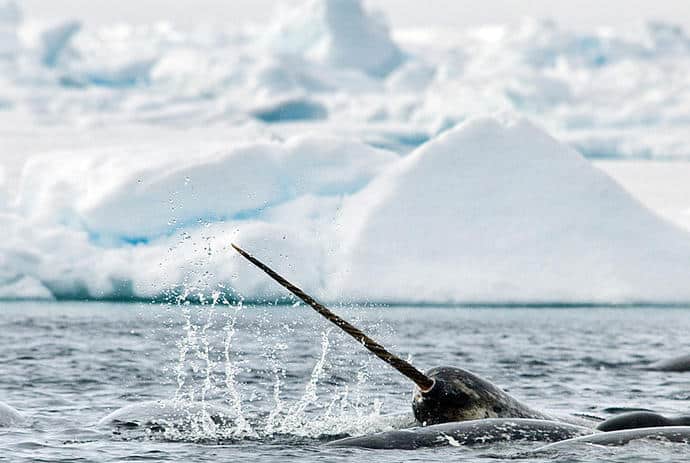
Photo Credit: Arctic Kingdom/Michelle Valberg
1. Narwhal
Narwhal are believed to be ice whale, which evolved without a dorsal fin to survive in extreme Arctic conditions and to move easily beneath the frozen sea and seek out cracks in the ice to breathe. Using sound to both communicate and find food, they mainly inhabit the icy waters of Baffin Bay between Nunavut and west Greenland. Details
Where to Find Them:
Near Nunavut communities of Arctic Bay, Pond Inlet and Resolute.
Guided Tour: With Arctic Adventures. Join the tour “Narwhals & Polar Bears at World’s End” where you can visit bird colonies of 20,000-plus kittiwakes, low-flying fulmars and king eider ducks, wild narwhals and belugas, roaming polar bears. This is a Canadian Signature Experience.
2. Muskox
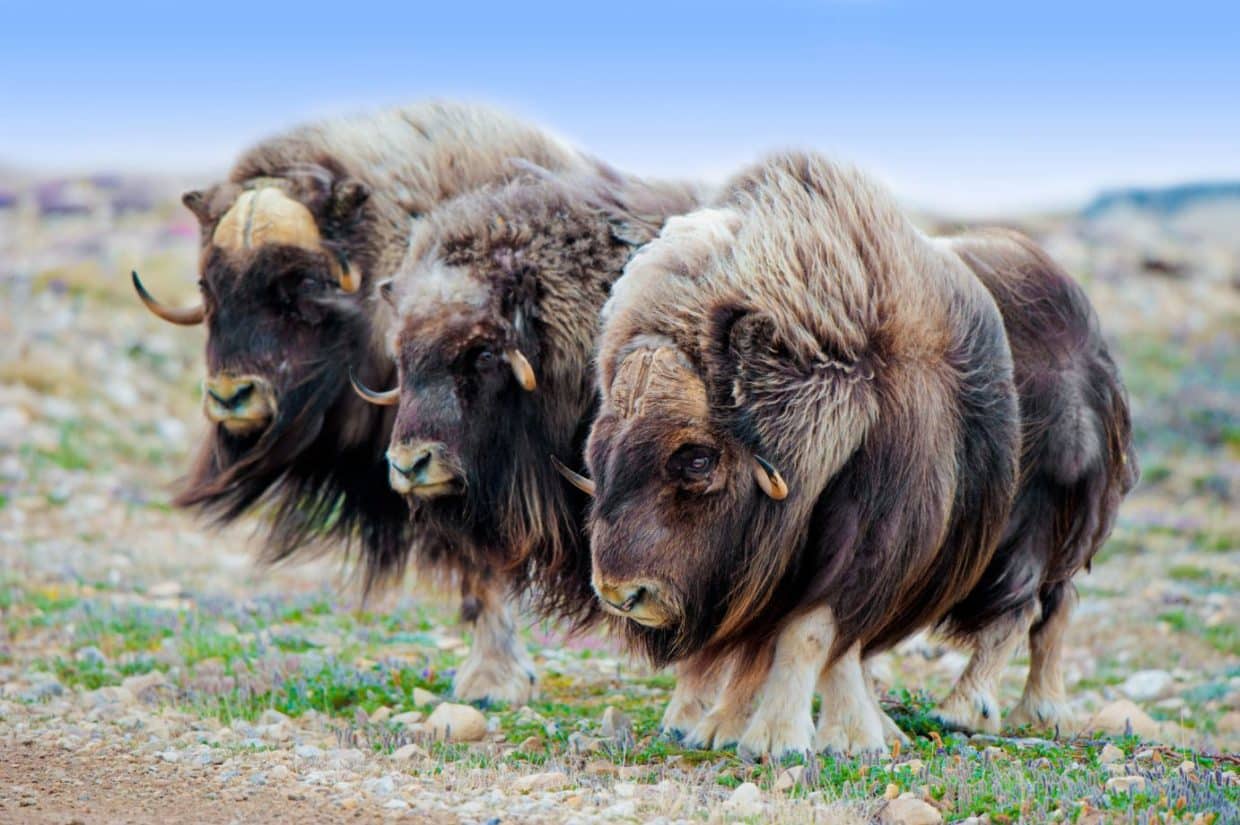
Photo Credit: NWT Tourism
The muskox is an Arctic mammal, noted for its thick coat and for the strong odor emitted during the seasonal rut by males, from which its name derives. Its Inuktitut name “umingmak” translates to “the bearded one.”
Where to Go:
Yukon – Ivvavik National Park
Nunavut – Ovayok Territorial Park and populations can be found Near communities such as Cambridge Bay, Gjoa Haven and Grise Fiord
Northwest Territories – Many regions of NWT including Aulavik National Park
3. Whooping Crane
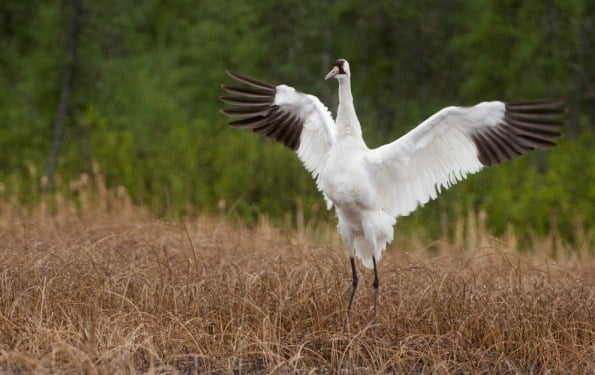
© Parks Canada / Klaus Nigge
Whooping Cranes, endangered species, are the tallest species of birds in North America. The original flocks of these majestic white birds with a bright red crown and a black “mustache”, and long black legs nest in Wood Buffalo National Park, and migrate to the Texas Gulf Coast and winter in or near the Aransas National Wildlife Refuge. Details
Where to Go:
Visit Wood Buffalo National Park – Northwest Territories/Alberta
4. Woodland Caribou
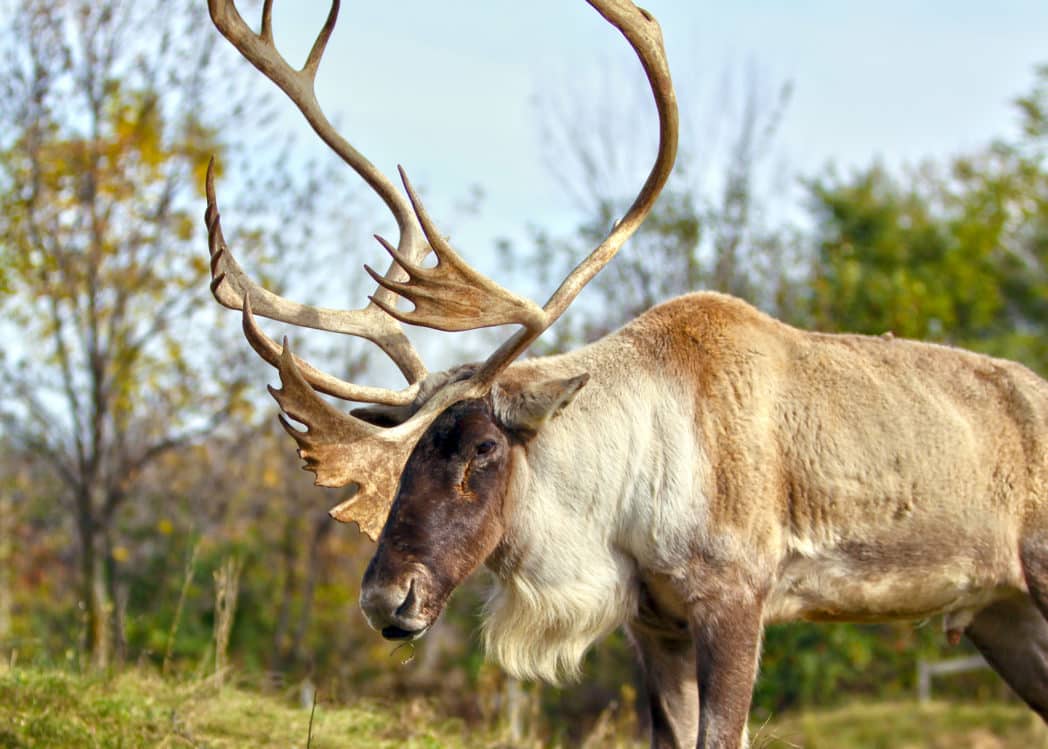
Photo Credit: beezart Flickr
A Canadian icon found on our 25-cents coin, Woodland Caribou, found in boreal forests of Canada is the only hoofed grazer with antlers on both male and female. The caribou use perfectly designed concave hooves with sharp edges to locate and dig through the snow in search of lichens. The scoop shape also serves as an efficient paddle for swimming. Two half-moon shaped toes grow longer in winter, providing purchase on icy surfaces. Details
Where to go:
Boreal forest in all provinces / territories across Canada except Nova Scotia, New Brunswick and Prince Edward Island
Sure shot sightings at: Canadian Rocky Mountain Parks: Banff, Jasper, Mount Revelstoke and Glacier National Parks
Prince Albert National Park, Saskatchewan
Woodland Caribou Provincial Park, Slate Islands Provincial Park, Algonquin park, and other parks in Northern Ontario
5. Beluga Whale
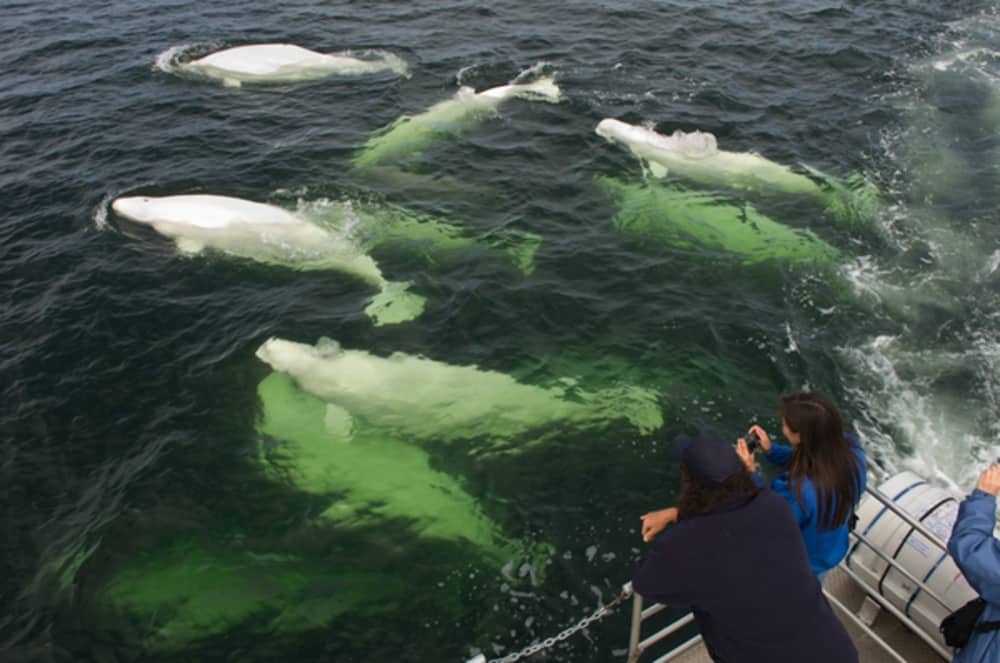
Photo Credit: Canadian Tourism Commission
These smiling white whales are extremely social and travel in pods of ten or more.They are very vocal communicators and can also mimic a variety of other sounds. The majority of belugas live in the Arctic Ocean and the seas and coasts around North America, Russia and Greenland.
Where to find them:
Canada’s Arctic, Hudson Bay and St. Lawrence estuary and Gulf of St Lawrence.
See them at Saguenay–St. Lawrence Marine Park or go to Arctic Watch, Somerset Island, Nunavut.
Tours: Go on guided tours from Churchill, Manitoba to Hudson Bay or from Bas-Saint-Laurent, Quebec.
Birds, Bears and Belugas Tour organized by Churchill Wild explores the wild tundra landscape for over 5 days. The catch phrase ‘Walk with Polar Bears, Swim with Belugas’ seems to come true during this amazing and incredible adventure. This is a Canadian Signature experience.
6. Bison
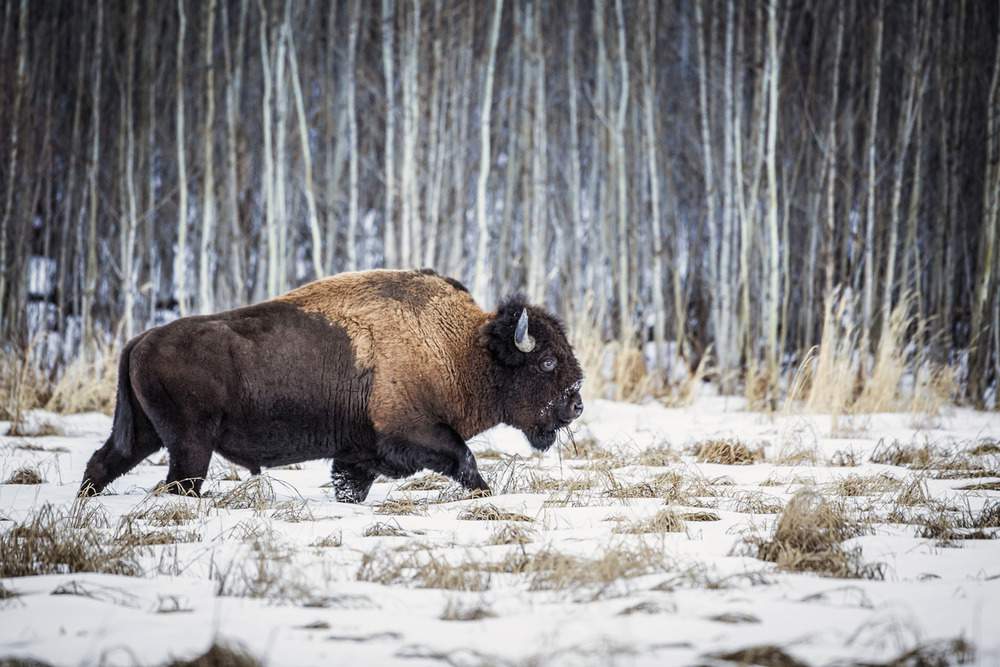
Photo Credit: Canadian Tourism Commission
Recognized by their massive forequarters and their large shoulder hump, Bison is classified as threatened. The current range of the Wood Bison is centered on the borders of the Northwest Territories, Alaska, northern Alberta, The current range of the Wood Bison is centered on the borders of the Northwest Territories, Alaska, northern Alberta , northeastern British Columbia, northwestern Saskatchewan and the Yukon.
Where you are sure to spot them:
Visit
Wood Buffalo National Park, NWT/Alberta
Elk Island National Park, Alberta
7. The Spirit Bear – The Kermode bear
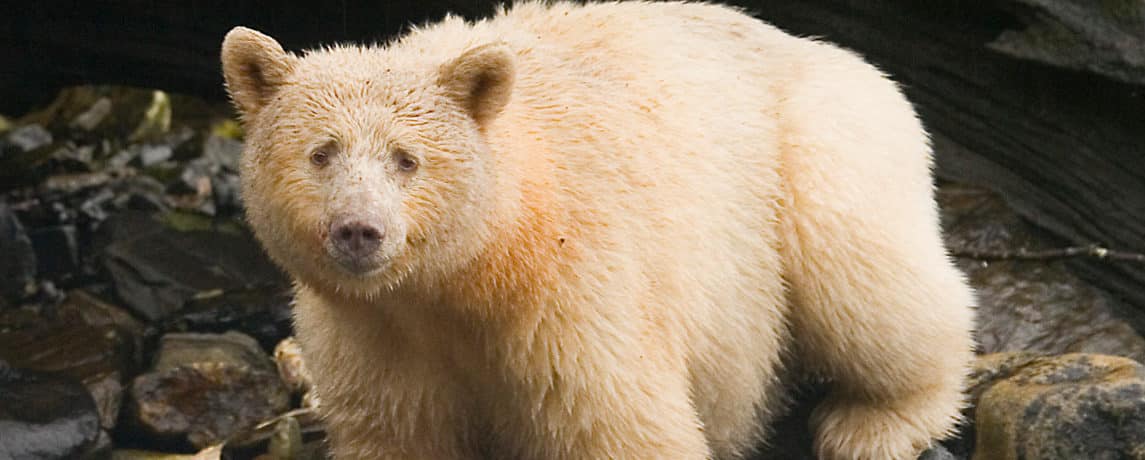
Photo Credit: Spirit Bear Lodge
The Kermode bear, also known as the “spirit bear” (particularly in British Columbia), is a rare subspecies of the American black bear living in the Central and North Coast regions of British Columbia. Scientists believe that the presence of a single recessive gene in these creatures is responsible for the white coat. As many as one in ten of these bears is born with the gene. This means that a black mother bear can have a cub born with the recessive gene and vice versa.
Where to find them: The Great Bear Rainforest.
Tours: Travel by boat into the heart of the Great Bear Rainforest from Spirit Bear Lodge in Klemtu, BC. Be guided by local First Nations through the expanses of their traditional territory in search of this near-mythic, cream-white bruin. This is a Canadian Signature Experience.
8. Atlantic Puffins
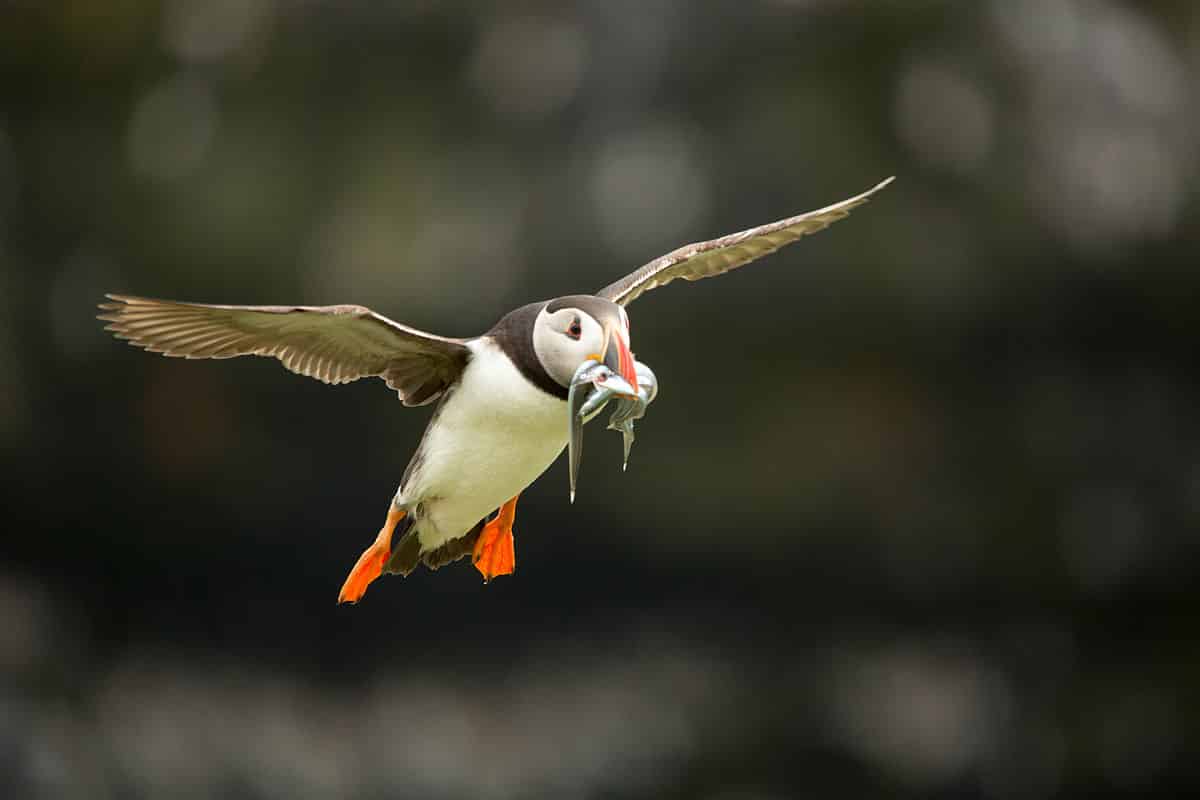
Photo Credit: By Tony Wood – Puffin Collection CC BY 2.0
The Atlantic puffin, also known as the common puffin, is a species of seabird in the auk family. It nests in clifftop colonies. A six week old puffin leaves the shore and returns to land only to breed. Their bright coloured beaks appear during mating season and fade to grey during the winter months.
Where to find them: Newfoundland & Labrador.
Witless Bay Ecological Reserve, Newfoundland contains North America’s largest Atlantic puffin colony. Public activity on the islands is restricted. Hence you need to go on a tour to watch the birds from the sea.
Tours:
Gatherall’s Puffin & Whale Watch, 90 Northside Rd., Bay Bulls,
O’Brien’s Whale and Bird Tours, 22 Lower Rd, Bay Bulls
9. Grizzly Bears
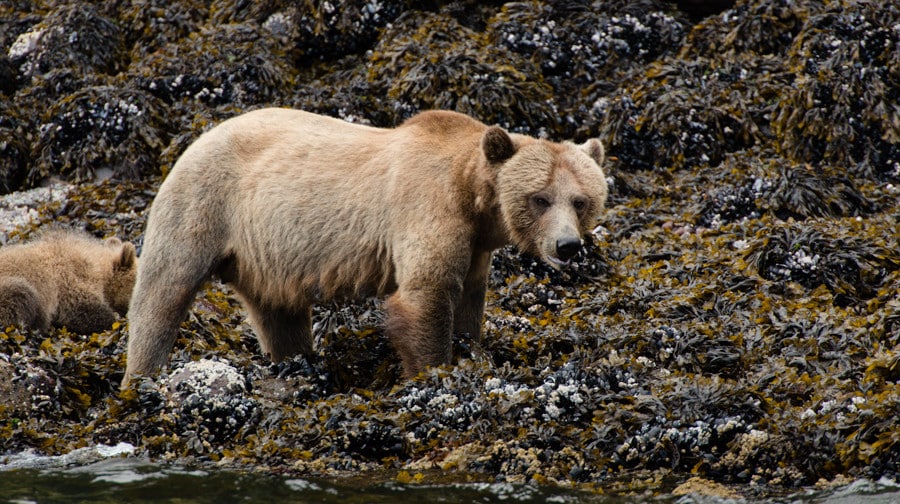
Photo Credit: Sea Wolf Adventures
More than half of Canada’s population of these brown awe-inspiring, top-of-the-food-chain predators, can be found in British Columbia. You can also find these North American subspecies of the brown bear in Mountain National Parks: Banff National Park, Jasper, National Park, Yoho National Park, Kootenay National Park. Sightings are also reported in Northern Manitoba.
Where to find them for sure:
The Khutzeymateen Provincial Park, British Columbia
The Great Bear Rainforest – Tweedsmuir Provincial Park – South. Many tour companies offer packages that include Grizzly Bear watching.
You may chance upon them grazing afar on your hikes in the Rockies. Be Bear Smart and read up Parks Canada notifications before venturing out during Bear activity months.
Mountain National Parks – Go on Lake Louise Gondola in summer. There is a possibility than you might see them on your ride to the top or from the summit.
Tours:
Grizzly Bears of the Wild: A First Nations Wildlife Journey into the Great Bear Rainforest – This wildlife wilderness tour is organized by Sea Wolf Adventures. Experience First Nations culture while travelling to the Great Bear Rainforest and the Broughton Archipelago. Your trip takes you to the territory of Grizzly Bears. Watch as they forage the shores for food or travel ashore along the Xakwikan River. This is a Canadian Signature Experience.
Grizzly Bear Ranch in Kaslo (Kootenay) offer Autumn Grizzly Viewing Tour Packages.
10. Polar Bears
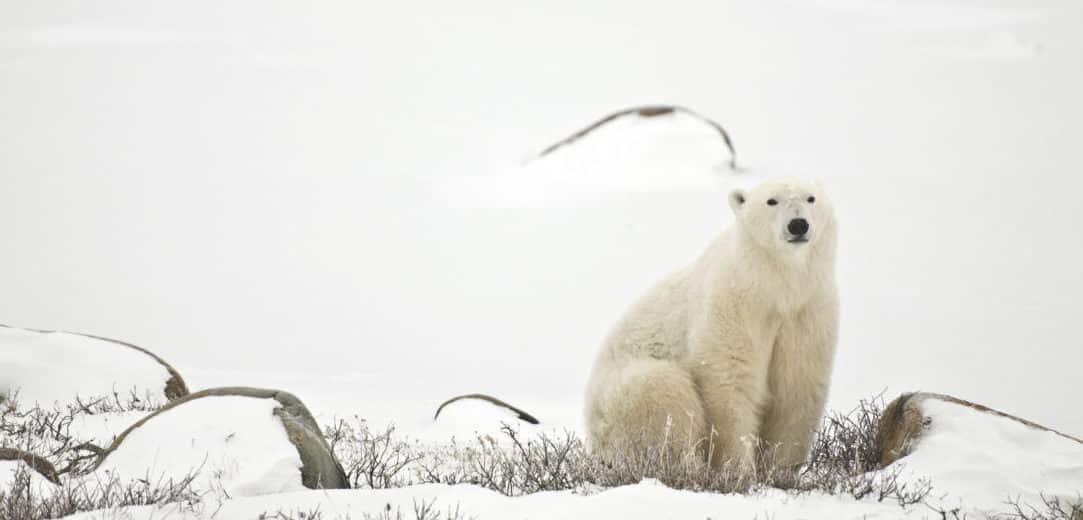
Photo Credit: Canadian Tourism Commission
The largest bear in the world and the Arctic’s top wildlife predator, Polar Bears are at risk as the bear’s future is inextricably linked to the sea ice habitat in the Arctic. Two thirds of the world’s polar bears live in Canadian territory all along the Arctic coast and throughout the High Arctic islands. Details
Where to see them: Churchill, Manitoba
Herschel Island Territorial Park, Yukon
Northwest Territories – Ulukhaktok or Sachs Harbour.
Nunavut – Arviat, Grise Fiord, Hall Beach, Pond Inlet, Qikiqtarjuaq and Repulse Bay
Few Canadian Signature Experience Tours that includes Polar Bear viewing in Churchill:
Polar Bears by Tundra Buggy: This tour organised by Frontiers North explores the wild tundra landscape in a specially designed all-terrain Tundra Buggy vehicle providing optimal photography opportunities and wildlife viewing. You can see many wildlife along this trip – caribou, beluga whales, wolves, polar bears, red and arctic fox, moose, Ross’ gulls and more.
The Best of the Arctic Tour arranged by the The Great Canadian Travel Company, are for people looking to experience more than just the wildlife Churchill has to offer. Enjoy a truly remarkable cultural experience, this 6-day tour of the Arctic circle the include crossing Arctic circle and viewing narwhal, caribou, seals and polar bears.
Marvels of Manitoba Tour: Organised by Churchill Nature Tours, explore Winnipeg to Churchill and cover 1710 kms in 9 days. Explore Manitoba’s prairie province from Winnipeg to Wasagaming to Duphin to Churchill. Learn about the cultural heritage of the province and also see the natural history and wildlife of Manitoba. You can see many animals on this trip including deer, elk, caribou, artic fox, bisons, black bear, artic hare, seals, beluga whales, and polar bear as well as diverse birdlife.
- Discover Grizzly Bears from Banff
- Price: $155.27
- 5-Night Churchill Tour and Polar Bear Adventure from Winnipeg
- Price: $4269.96



You missed: Raccoons – Backyards of Toronto